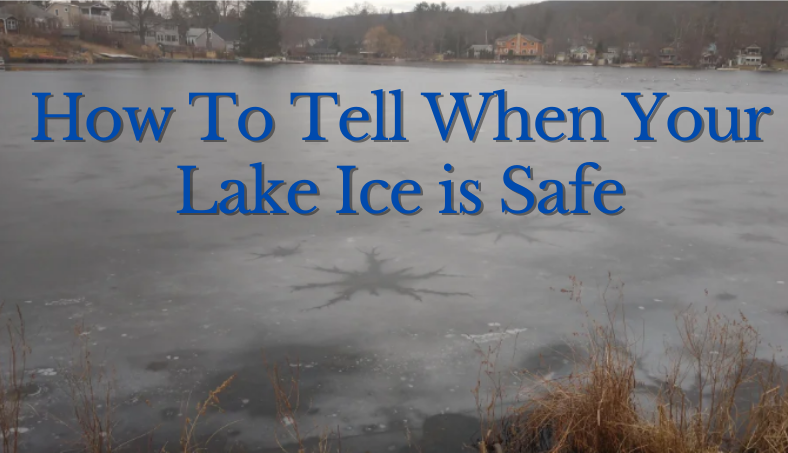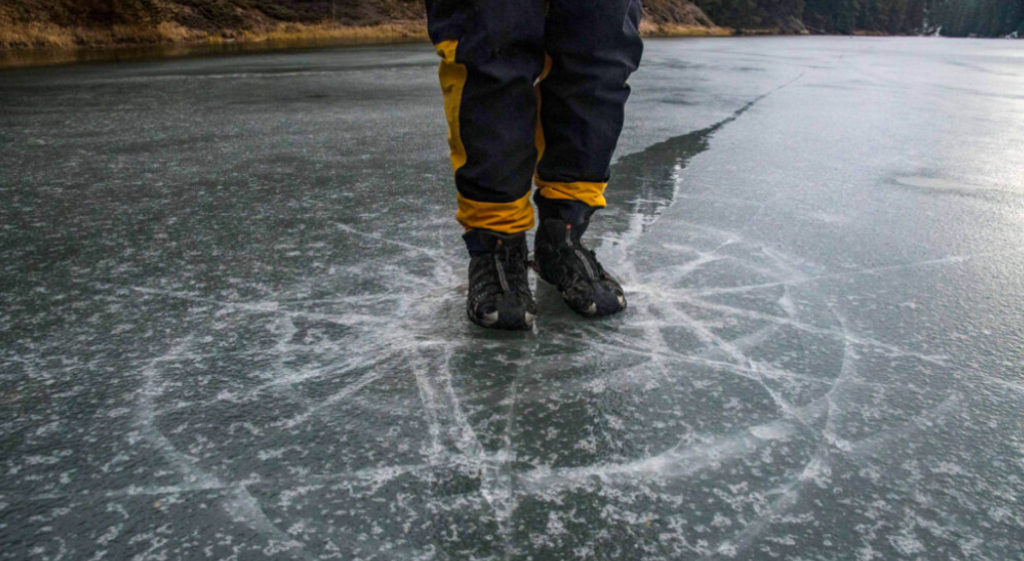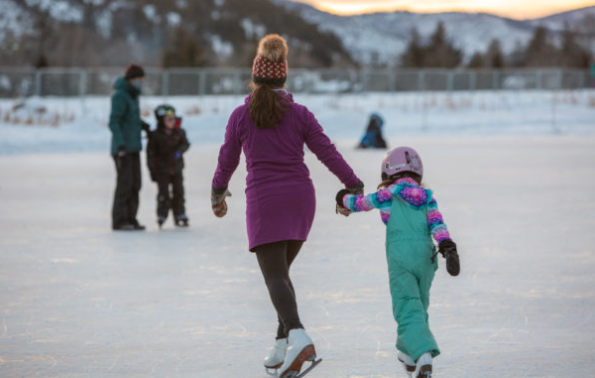
Every winter on the lakefront brings new opportunities to participate in a multitude of ice activities. Ice skating, fishing, hockey, and even just walking across the lake brings a winter thrill to the long cold days, but how do you know if its safe to venture out on the ice? If you are lucky enough to live in a lakefront home, this is an important question to ask, and equally important to be sure about. The saying “treading on thin ice” means something different when the potential to fall through the ice is real. We have some quick tips to help you gauge the ice safety, but always remember if you are not sure, don’t go on it!
Recognize that determining the safety of ice is dependent on a combination of factors, not on one factor alone. Ice safety is determined by assessing many factors together. Some of these include :
- Appearance of the ice – its color, texture and features
- Thickness of the ice – there are recommended thicknesses for different uses, which are mentioned above
- External temperature over a period of time and on the day- Is it below freezing all day or just at night?
- Snow coverage-can you see the surface? Snow can be an insulator keeping the surface warmer than freezing.
- Depth of water under ice-shallower water freezes faster, a frozen shore doesnt mean the middle is safe.
- Size of water body and location-stay away from flowing water
Once you have made the decision to head out on the ice, be prepared for any mishaps. Even the most experience ice tester cant predict a hidden safety issue. Accidents happen, so it’s best to be prepared. Falling through the ice is scary at best, but can be deadly. If you’re heading out on the lake, always let someone know where you’re going, and be prepared for what to do in case of an emergency.
- If you are out by yourself and fall through the ice- Resist the immediate urge to climb back out where you fell in. The ice is weak in this area.Try to relax and catch your breath. Turn yourself toward shore so you are looking at where you entered onto the ice. Kick your legs. Continue kicking your legs, and crawl onto the ice. Once out of the water don’t stand up and continue to crawl to shore.
- When you are with others on the ice-Rescuing another person from ice can be dangerous. Asses whether a professional can get there in time, call 911. If you must venture out to rescue someone, wear a PFD and carry a long pole or branch to test the ice in front of you. Bring something to reach or throw to the person.Remaining low, extend or throw your emergency rescue device.Have the person kick while you pull them out.
Find alternatives if in any doubt. Skaters can always find a rink or a supervised lake area; snowmobilers and skiers can always stick to trails on land in place of crossing ice; walkers can keep off the ice and continue with their snowshoes along the trail. Lakefront living is fun year round, above all use common sense, and fun will be had by everyone!
Happy New Year!
“Posted by Scott Freerksen – The Lake Guy”



